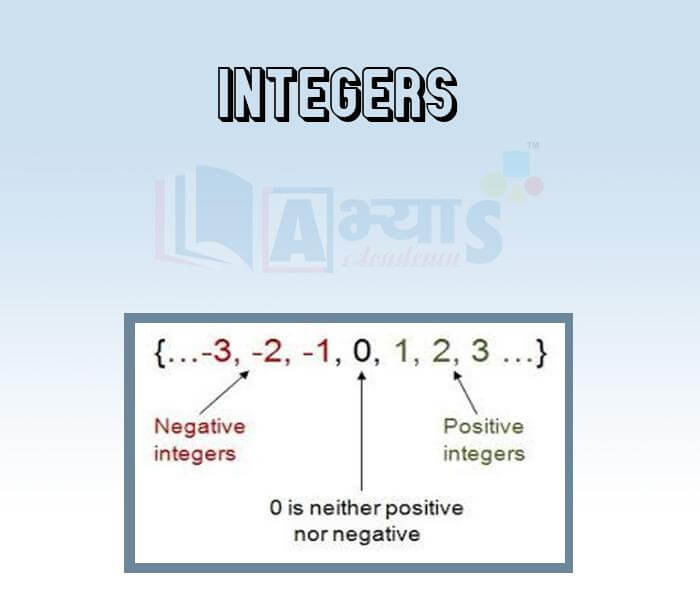Integers





Integers
Integers:
An integer is a whole number (not a fractional number) that can be positive, negative, or zero. Examples of integers are: -5, 1, 5, 8, 97, and 3043. Examples of numbers that are not integers are: -1.43, 1 3/4, 3.14, .09, and 5,643.1.
Whole numbers less than zero are called negative integers. The integer zero is neither positive nor negative, and has no sign. Two integers are opposites if they are each the same distance away from zero, but on opposite sides of the number line. Positive integers can be written with or without a sign.
Mr. Anil had a balance of rs 11700 in his account . He deposited amount of Rs 1925, Rs 3380,Rs 4000 on different days of a month and withdraw Rs 2500,Rs 5850,Rs 1000 also. What is his final balance (in Rs) at the end of the month? | |||
| Right Option : B | |||
| View Explanation | |||
State 'T' for true and 'F' for false. (1) Sum of two positive integers is a positive integer. (2) Sum of two negative integers is always a negative integer. (3) Difference of a positive and negative integers is always a negative integer. (4) I is the additive identity of integers. | |||
| Right Option : B | |||
| View Explanation | |||
Fill in the following blank : 11 - ( - 6 ) = 11 + _________ | |||
| Right Option : C | |||
| View Explanation | |||
Students / Parents Reviews [10]
My experience was very good with Abhyas academy. I am studying here from 6th class and I am satisfied by its results in my life. I improved a lot here ahead of school syllabus.

Ayan Ghosh
8thIt was a good experience with Abhyas Academy. I even faced problems in starting but slowly and steadily overcomed. Especially reasoning classes helped me a lot.

Cheshta
10thMy experience with Abhyas academy is very good. I did not think that my every subject coming here will be so strong. The main thing is that the online tests had made me learn here more things.

Hiya Gupta
8thBeing a parent, I saw my daughter improvement in her studies by seeing a good result in all day to day compititive exam TMO, NSO, IEO etc and as well as studies. I have got a fruitful result from my daughter.

Prisha Gupta
8thIt has a great methodology. Students here can get analysis to their test quickly.We can learn easily through PPTs and the testing methods are good. We know that where we have to practice

Barkha Arora
10thAbhyas Methodology is very good. It is based on according to student and each child manages accordingly to its properly. Methodology has improved the abilities of students to shine them in future.

Manish Kumar
10thIt was good as the experience because as we had come here we had been improved in a such envirnment created here.Extra is taught which is beneficial for future.

Eshan Arora
8thAbout Abhyas metholodology the teachers are very nice and hardworking toward students.The Centre Head Mrs Anu Sethi is also a brilliant teacher.Abhyas has taught me how to overcome problems and has always taken my doubts and suppoeted me.

Shreya Shrivastava
8thA marvelous experience with Abhyas. I am glad to share that my ward has achieved more than enough at the Ambala ABHYAS centre. Years have passed on and more and more he has gained. May the centre flourish and develop day by day by the grace of God.

Archit Segal
7thOne of the best institutes to develope a child interest in studies.Provides SST and English knowledge also unlike other institutes. Teachers are co operative and friendly online tests andPPT develope practical knowledge also.
